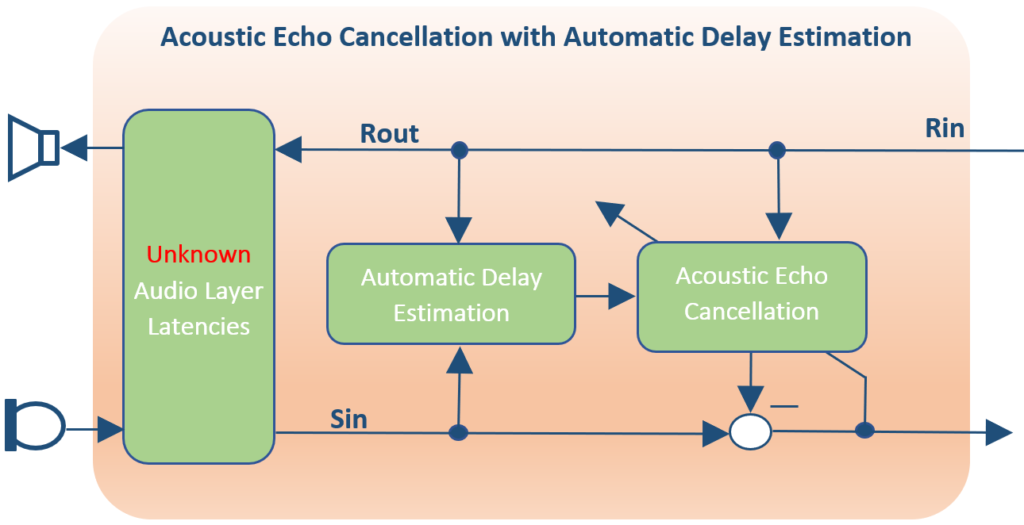Automatic Echo Delay compensation is a key add-on feature to Acoustic Echo Cancellation software. The automatic echo delay algorithm estimates the bulk echo delay observed between the loudspeaker and microphone sample streams, and automatically adjusts the delay compensation parameter of the AEC.
What scenarios require this software?
- Full duplex applications running on mobile devices, laptop devices and desktop devices
- AV setups where the audio transducer connections can have different latency configurations (e.g. TV gaming modes, Dante Audio networks)
- Conferencing rooms where the distance between the loudspeaker and microphones can vary greatly between installations
In most scenarios, this software can be used as part of a training sequence during application startup. In other scenarios where the user has control over the system latency during an active call, this software can be used during run-time. The automatic echo delay estimation software periodically checks the observed echo delay during the call, and if the delay has significantly changed, it will automatically modify the AEC’s delay parameter.
If I can set the echo tail length to a very large value to cover all of the potential echo delays, why do I need to use this feature? To get the optimal performance out of an echo canceller, the echo tail length should be set to the appropriate size. When set to the correct length, the echo canceller will converge faster and have better steady-state echo return loss enhancement. Besides, running a longer tail will consume more CPU resources. Including automatic echo delay compensation is a good feature to include for scenarios with unpredictable echo delays.
